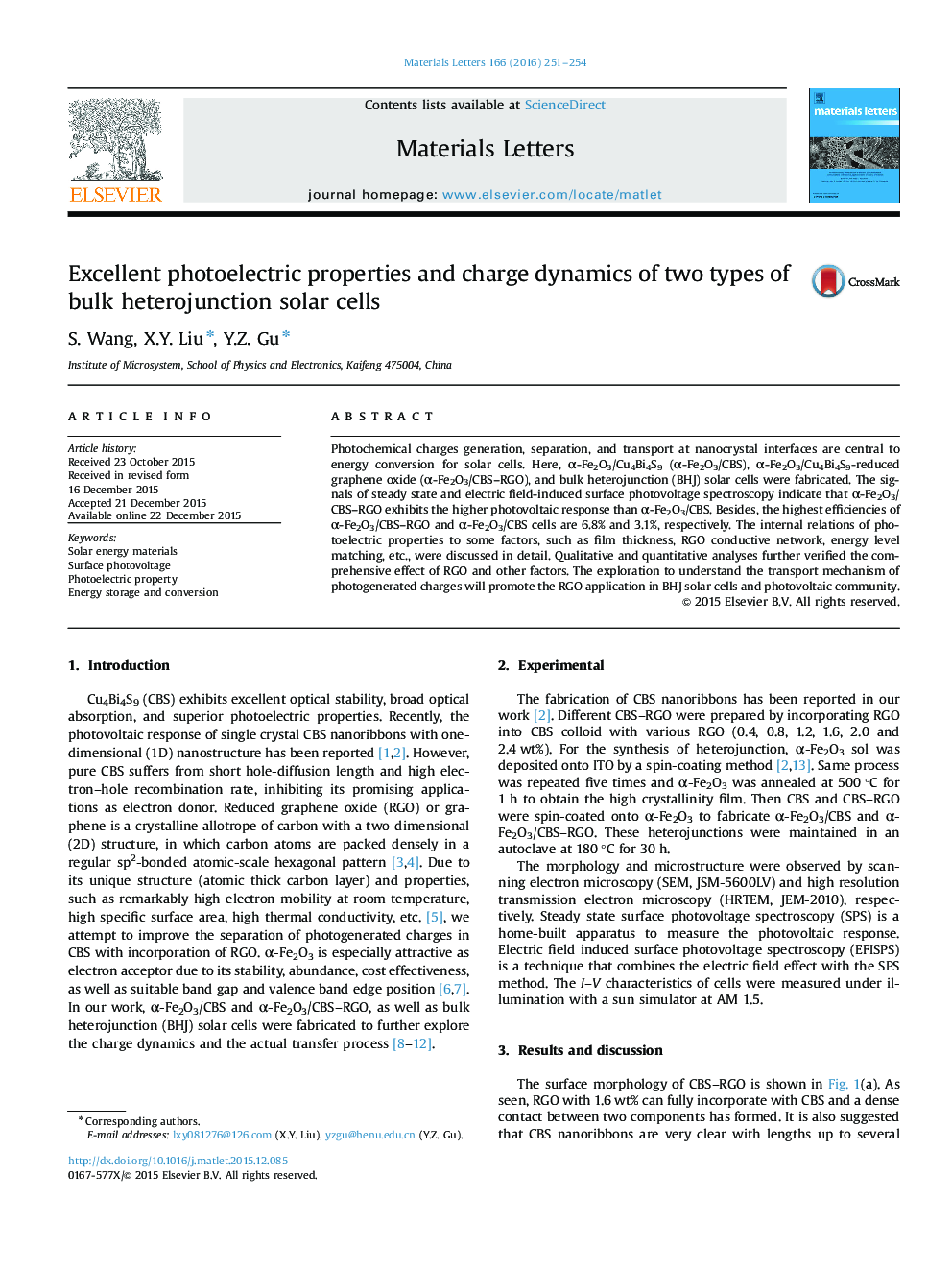| Article ID | Journal | Published Year | Pages | File Type |
|---|---|---|---|---|
| 1642203 | Materials Letters | 2016 | 4 Pages |
Abstract
Photochemical charges generation, separation, and transport at nanocrystal interfaces are central to energy conversion for solar cells. Here, α-Fe2O3/Cu4Bi4S9 (α-Fe2O3/CBS), α-Fe2O3/Cu4Bi4S9-reduced graphene oxide (α-Fe2O3/CBS-RGO), and bulk heterojunction (BHJ) solar cells were fabricated. The signals of steady state and electric field-induced surface photovoltage spectroscopy indicate that α-Fe2O3/CBS-RGO exhibits the higher photovoltaic response than α-Fe2O3/CBS. Besides, the highest efficiencies of α-Fe2O3/CBS-RGO and α-Fe2O3/CBS cells are 6.8% and 3.1%, respectively. The internal relations of photoelectric properties to some factors, such as film thickness, RGO conductive network, energy level matching, etc., were discussed in detail. Qualitative and quantitative analyses further verified the comprehensive effect of RGO and other factors. The exploration to understand the transport mechanism of photogenerated charges will promote the RGO application in BHJ solar cells and photovoltaic community.
Keywords
Related Topics
Physical Sciences and Engineering
Materials Science
Nanotechnology
Authors
S. Wang, X.Y. Liu, Y.Z. Gu,
